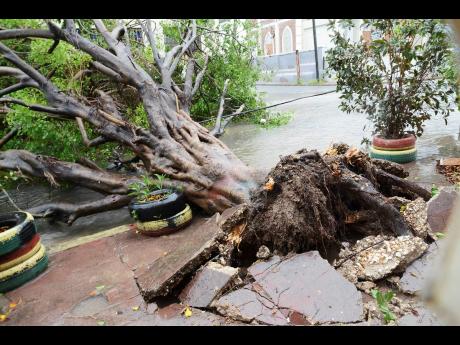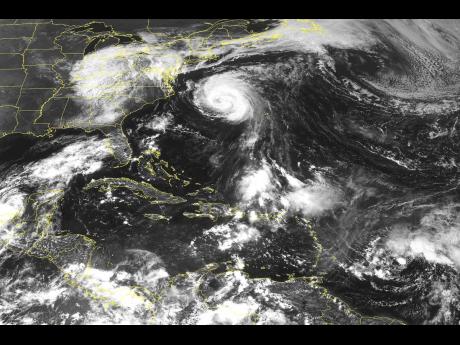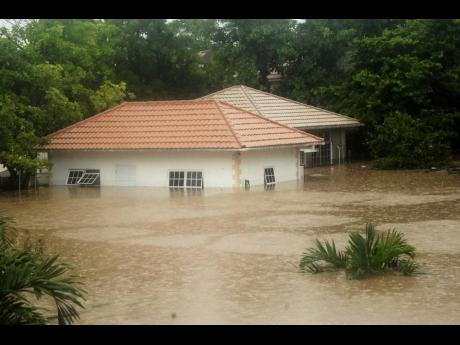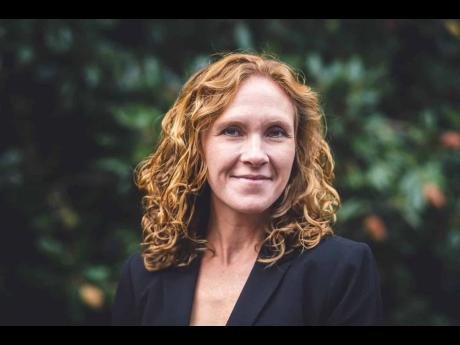Storm warning
Jamaica faces increased hurricane risk
At the launch of the national hurricane preparedness campaign on June 1, the prime minister, Andrew Holness, stressed that Government’s strategy “must be to anticipate, plan, and prepare for the threat [of hurricanes] and not to panic if, or when, it materialises”.
It’s a strategy the prime minister and the National Disaster Committee, along with local businesses and the entire country, must stay true to, particularly since forecasters are predicting a busy hurricane season this year, according to two meteorologists who spoke to The Sunday Gleaner.
“Every business needs a well-thought-out plan that prioritises consistent communication with family, friends, and colleagues before, during, and after the storm,” said Sara Pratley, vice-president of global intelligence at AlertMedia, a United States-based firm which provides emergency communications systems to businesses and destinations.
“Residents of the Caribbean are no stranger to hurricanes, but they need to take every hurricane season seriously, because once a storm has formed and is aiming towards the Caribbean, preparing becomes much more difficult as residents rush to complete preparations and necessary items become increasingly difficult to find,” stated Dr Athena Masson, a leading hurricane expert and meteorologist who works for the Florida Public Radio Emergency Network.
Weather forecasters have predicted an overactive hurricane season this year, with up to 20 named storms, including 10 hurricanes, up to five of which could be Category 3 or higher.
In its most recent forecast of June 3, the highly respected Colorado State University (CSU) anticipated 18 named storms this year, four more than the average for 1991-2020; 80 named storm days, compared to an average of 69.4 days between 1991 and 2020; and 35 hurricane days, compared to an average of 27 between 1991 and 2020.
“As is the case with all hurricane seasons, coastal residents are reminded that it only takes one hurricane making landfall to make it an active season for them. They should prepare the same for every season, regardless of how much activity is predicted,” said the university.
HIGH PROBABILITY
Of interest to Jamaica and the northern Caribbean is the CSU forecast of a 58 per cent probability of at least one major hurricane passing through the Caribbean Sea this season, a prediction that meshes well with atmospheric conditions and sea surface temperatures being observed across the Atlantic, according to the meteorologists.
In fact, water temperatures reached 80 degrees as early as April this year, several degrees above normal for that time of year, Masson revealed.
“We usually start to see the Caribbean and the Gulf of Mexico being favoured for sea surface temperatures of about 80 degrees further into June, but we’ve been seeing temperatures hitting 80-degree marks during late April and that’s not normal,” Masson told The Sunday Gleaner. “In April, the Caribbean and the Gulf of Mexico should be in the mid to upper 70s, not hitting that 80-degree mark. Not good for us.”
“While favourable sea surface temperatures throughout the Atlantic and Caribbean aren’t quite as warm as they were in 2020, very warm waters are still evident within the deep tropics between coastal Africa and northern South America. Studies have shown that this water temperature pattern is often supportive of enhanced African tropical wave activity,” added Pratley. “The majority of Atlantic and Caribbean hurricanes originate from African tropical waves, so these atmospheric disturbances are important to monitor as they travel west.”
While the hurricane season runs from June 1 through November 30, the northern Caribbean, and Jamaica in particular, generally experience the majority of tropical cyclone activity during the peak of the season – August through October, according to the hurricane experts.
And though meteorologists may be able to forecast the frequency of cyclones each season, they stress that they cannot forecast where these cyclones will track until after these systems have developed.
DRAIN CLEANING
Still, a 1999 study of fluctuations of North Atlantic hurricane frequency over a 100-year period from 1886 to 1996, conducted by Dr James Elsner, the American atmospheric scientist who has made substantial contributions to understanding of the spatial, temporal, and physical relationships of tropical cyclones and tornadoes, found there is about a 48 per cent chance that at least one hurricane will threaten Jamaica each year.
And, parts of Jamaica, along with Puerto Rico and the western part of Cuba, have a four per cent chance of being hit by a major hurricane each year, according to a study by the US National Atmospheric and Oceanic Administration, using data from 1944-1999.
“That’s one of the highest in all of the Atlantic,” Masson stressed.
In his address to the National Disaster Risk Management Council at the start of the hurricane season, Holness asked the committee to direct its attention to priority areas such as the readiness of shelters and shelter operations, cleaning drain infrastructure, and enhanced public education.
The cleaning of drains is of critical importance, particularly in areas that are prone to flooding from rains that can accompany a storm.
………………….
New Masson-Gough hurricane scale more inclusive
The Saffir-Simpson hurricane scale used to estimate hurricane strength considers maximum sustained winds, but it does not take into account factors such as rain amounts, forward speed, and size of a tropical cyclone.
Dr Athena Masson, a meteorologist with the Florida Public Radio Emergency Network, has developed a new scale, the Masson-Gough scale, which includes these parameters, along with wind, barometric pressure, and storm surge, as well as precipitation, and extratropical transition.
“Many of us who have gone through hurricanes, especially in the Caribbean, know it’s not just the wind, there is so much more about it. A cyclone may have wind speeds of just 72 miles per hour, making it a tropical storm, but it can stall over an area and rain itself out for days and claim so many lives that way,” she said. “Every storm can be destructive in its own way.”
There have been many such examples in recent years, including Hurricane Dorian in 2019, a Category 5 storm which sat over northwestern Bahamas for 48 hours, causing flooding and mass destruction on the islands of Abaco and Grand Bahama; and Tropical Storm Erika in 2015, which dumped 33 inches of rain on Dominica, wiping out an entire village and killing 30 people.
And last year, while every named storm remained nearly 100 miles from central Jamaica, there were multiple instances of significant flooding from activity that directly made landfall along Cuba and the Yucatan Peninsula. The heavy rainfall associated with tropical storms Eta and Zeta, for example, triggered flash flooding and a deadly landslide in St Andrew.
IT ONLY TAKES ONE
“Individuals should determine well in advance if their home or business is within a flood-prone area, and if they have access to a safer location or structure in the event of an evacuation order,” warned AlertMedia executive Sara Pratley. “While hurricane-force winds are incredibly dangerous, coastal storm surge and inland freshwater rainfall flooding are often the biggest killers.”
The western Caribbean Sea is notorious for late-season major hurricane activity, so Atlantic tropical wave activity deserves monitoring well into October, the hurricane experts advised, adding that regardless of how active the hurricane season is forecast to be, all it takes is one hurricane to inflict great destruction.
“Odds of the northern Caribbean and the island of Jamaica being impacted rise with an increased amount of cyclone activity,” said Masson, “but it only takes one storm to make a hurricane season catastrophic.”








